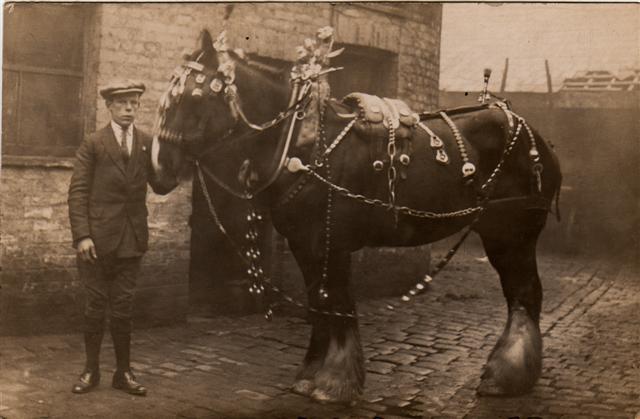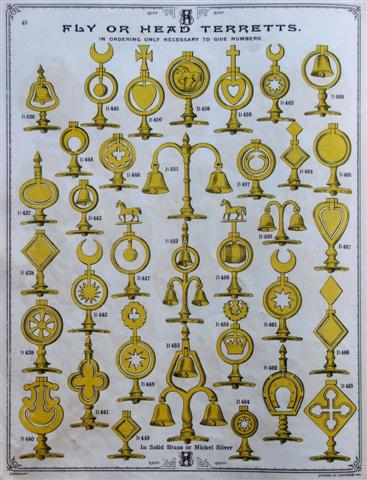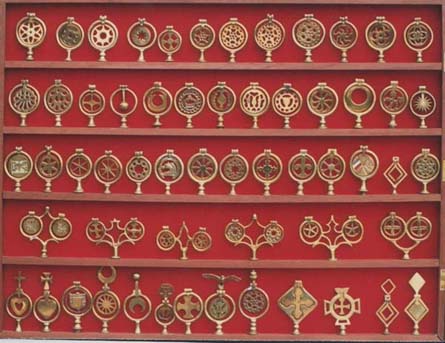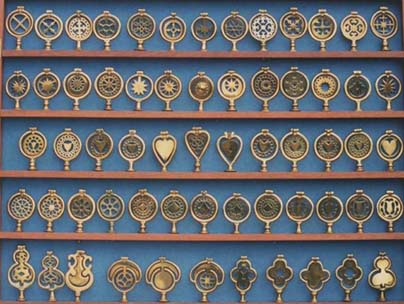Fly-Head Terrets (Swingers)
‘Fly head terrets’ as they are described in the manufacturers’ catalogues are today better known as ‘swingers’ and in their simplest form are a plain hinged disc swinging within a circular fixed terret, the name by which the rein loops fitted to hames and saddles are known. One swinger would be screwed to the head strap of the bridle placed between the horse’s ears and in the case of the Scottish harness spiked into the high peak of the closed collar. Folklore tradition has it that the polished swinging disc produced a sun flash said to ward off evil spirits but a more practical explanation was to discourage flies from bothered horses, and this gave rise to them being described as fly terrets. When fitted with a small bell they played a part in warning of an approaching horse and cart in a narrow lane.
When introduced in the mid 19th C the swinger gained popularity and became more elaborate in design so that they now resembled a full size hanging brass and were soon being sold together as matching sets. Both pattern and bell terrets began to be made in multiple configurations of two or three separate rings with plumes added to the top of the frame. These complex creations were now attached to the saddle ridge and even the horse’s rump strap, particularly on decorated show harness, which became a feature especially in Cornwall.
Below, a good example of a decorated harness from Manchester about 1912. Note the bell terrets mounted on the head and the rump of this horse
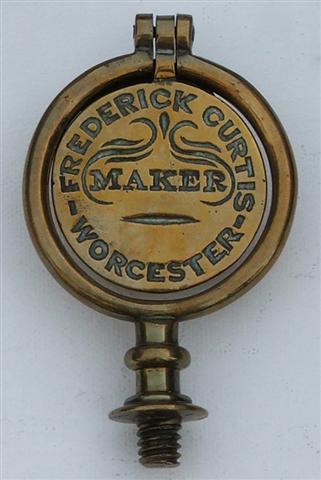
The page illustrated below however is one of those rare exceptions and is taken from the pattern book of Shattock & Hunter,which was a Bristol firm.
This splendid colour illustration from their catalogue shows a good selction of the many designs available to the working horseman in the 1890s. Note also the two smaller swingers at the bottom of the page that were made for pony or ‘vanner’ harness. Also shown are several examples of the terrets known as ‘tumblers’ with their double-centred designs, which did exactly what their name suggests, tumbling over and over in their frames, rather than just swinging back and forth.
Below, four royalty swingers. Note how the George V crown allowed a space within it to add a piece of worsted cloth or ribbon for colour

